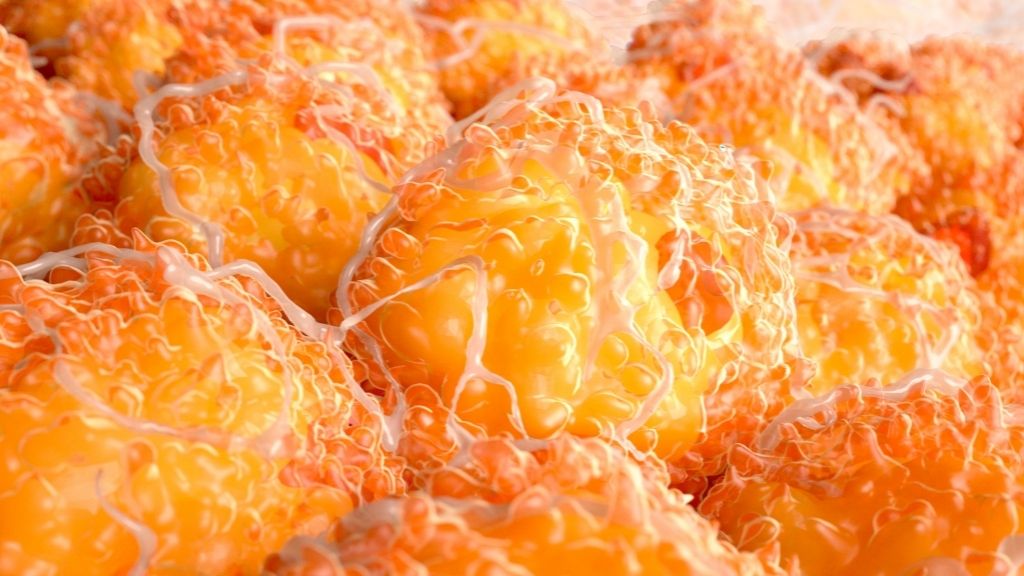The coronavirus infects fat cells, study shows
This triggers inflammation in the tissue.

Editor's note: This article first ran on Dec. 9, 2021, after an earlier version of the study was posted to the preprint database bioRxiv. The article was updated on Sept. 23, 2022 to reflect the new information contained in the peer-reviewed journal.
The coronavirus SARS-CoV-2 directly infects fat cells and specific immune cells found in fat tissue, sparking inflammation that can then spread to uninfected "bystander" cells nearby.
In a study, published Sept. 22 in the journal Science Translational Medicine, scientists experimented with fat tissue obtained from patients undergoing bariatric, heart and chest surgeries, to see if the tissue could be infected by the coronavirus. They found that the virus could infect and replicate within mature fat cells, known as adipocytes, and these infected cells became inflamed. They also found that specific subsets of immune cells housed within the fat tissue, called macrophages, also became infected and kicked off a much more intense inflammatory response.
Notably, the virus could not make new copies of itself inside the macrophages — the pathogen could break into the immune cells, but the buck stopped there. However, even this short-lived invasion triggered a significant change in the macrophages, causing them to spew inflammatory substances into the surrounding tissue. There, immature fat cells, called pre-adipocytes, reacted to the onslaught of chemical signals by becoming inflamed themselves.
These pre-adipocytes cannot be directly infected by SARS-CoV-2, the team found, but through this chain reaction, they were indirectly affected by the virus.
Related: COVID-19 can infiltrate insulin-producing cells in the pancreas, study suggests
In addition to these experiments, the team examined fat tissue from patients who died from COVID-19 infections and found coronavirus genetic material in the fat that surrounded various organs. Viruses like HIV and influenza can squirrel themselves away in fat tissue, as a way of hiding from the immune system. Similarly, "adipose tissue could serve as a potential reservoir for SARS-CoV-2," and in theory, this hidden reservoir could contribute to the enduring symptoms seen in people with long COVID, the team wrote in their report.
Get the world’s most fascinating discoveries delivered straight to your inbox.
What's more, in two patients who died of COVID-19, the team found inflammatory immune cells had assembled around infected adipocytes in the fat tissue surrounding the heart. "This was of great concern to us, as epicardial fat lies right next to the heart muscle, with no physical barrier separating them," co-senior author Dr. Tracey McLaughlin, professor of endocrinology at Stanford University School of Medicine, said in a statement. "So, any inflammation there may directly affect the heart muscle or coronary arteries."
Since the early days of the pandemic, people with obesity have faced a higher risk of developing severe symptoms, requiring hospitalization and dying from COVID-19, Live Science previously reported. A number of theories arose to explain why fat increased the risk of bad COVID-19 outcomes.
For starters, excess fat in the abdomen can push on the diaphragm and thus restrict airflow in the lungs; if people are already struggling to get enough oxygen into their lungs on a good day, they may fare worse against COVID-19, Science reported. In addition, obese people's blood tends to clot more easily than those with lower fat levels — another major problem in the context of COVID-19, which can trigger extensive blood clotting.
In addition, as fat builds up in the body, fat cells infiltrate the spleen, bone marrow and thymus, where many immune cells are produced. This can weaken the immune system by both reducing the number and undermining the efficacy of immune cells produced. Excess fat can also spur chronic, low-grade inflammation throughout the body, as fat cells release inflammatory substances called cytokines and macrophages do the same, in an effort to clear dead fat cells from the body, Science reported.
While all these factors may worsen COVID-19 outcomes for people with obesity, now there's this evidence that the virus infects fat cells directly.
"Infected fat tissue pumps out precisely the inflammatory chemicals you see in the blood of severe COVID patients," co-senior author Dr. Catherine Blish, a professor of infectious diseases at the Stanford University School of Medicine, said in the statement. "It's reasonable to infer that having a lot of infected fat could contribute to the overall inflammatory profile of severely ill COVID-19 patients."
It's still not clear how the virus infiltrates fat and fat tissue-borne immune cells. That's because the study authors found negligible amounts of ACE2 — the main "doorway" that the virus uses to enter cells — in their tissue samples. "It’s highly unlikely the virus is entering through ACE2, because we couldn’t detect the functional protein in adipose tissue," Blish said.
Originally published on Live Science.

Nicoletta Lanese is the health channel editor at Live Science and was previously a news editor and staff writer at the site. She holds a graduate certificate in science communication from UC Santa Cruz and degrees in neuroscience and dance from the University of Florida. Her work has appeared in The Scientist, Science News, the Mercury News, Mongabay and Stanford Medicine Magazine, among other outlets. Based in NYC, she also remains heavily involved in dance and performs in local choreographers' work.


